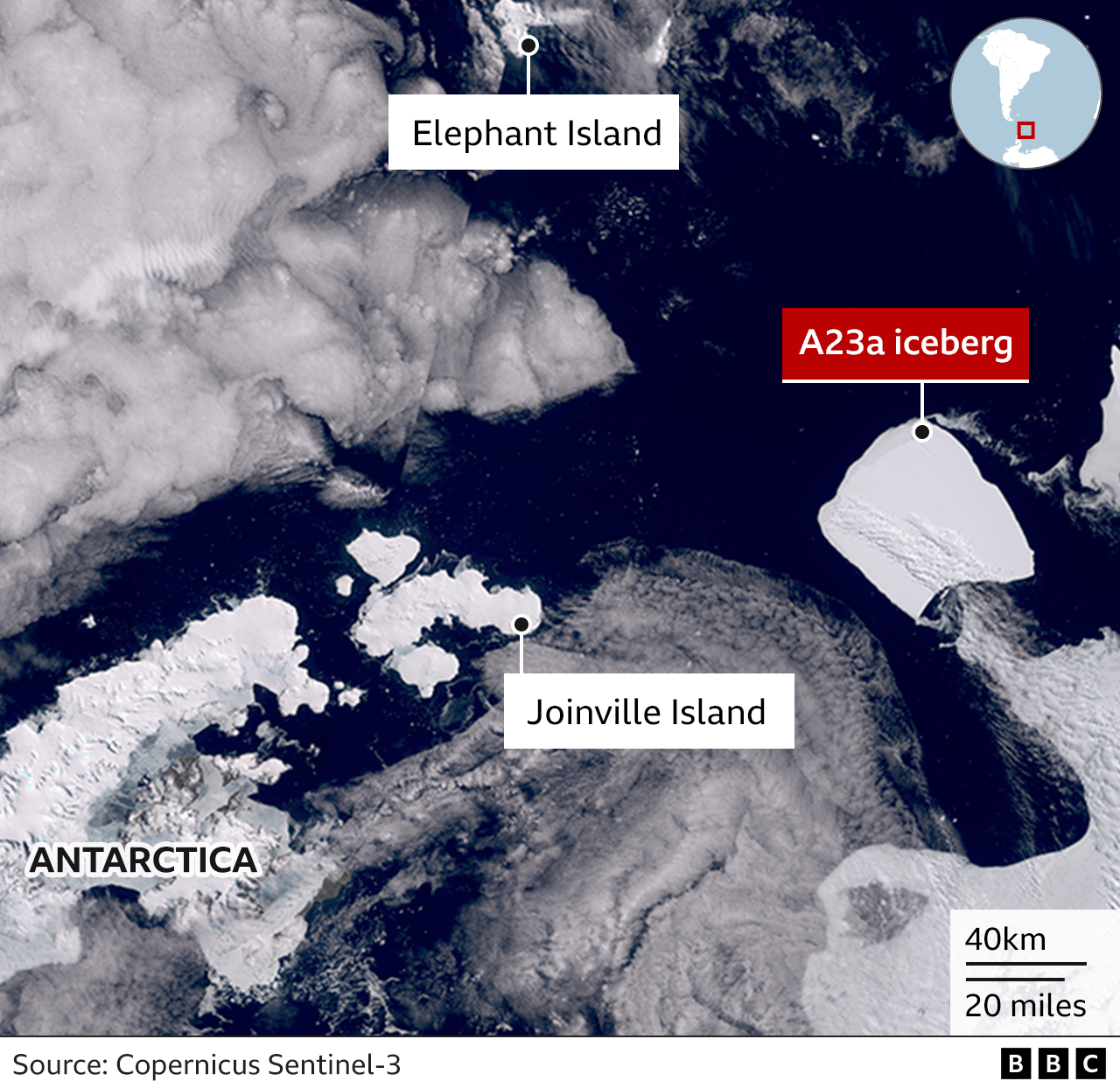-

-
-
Loading

Loading

The largest iceberg in the world, known as A23a, has finally started moving after being stuck to the ocean floor for over 30 years. It broke away from the Antarctic coastline in 1986 and quickly grounded in the Weddell Sea, becoming an enormous ice island. With an area of almost 4,000 sq km (1,500 sq miles), it is more than twice the size of Greater London. After years of being static, the past year has seen A23a drift at a fast pace, and it is now about to move beyond Antarctic waters. A23a is not only impressive due to its size, but also its thickness. This gigantic iceberg is around 400m (1,312 ft) thick, much thicker than the London Shard, the tallest skyscraper in Europe, which stands at 310m. A23a was part of a large release of icebergs from the Filchner Ice Shelf in Antarctica. Interestingly, at the time, it was hosting a Soviet research station. Moscow sent an expedition to retrieve equipment from the station, fearing it would be lost. However, the iceberg did not drift far before becoming firmly anchored to the Weddell Sea floor. The question now is why, after almost 40 years, A23a is finally moving. Dr. Andrew Fleming, a remote sensing expert from the British Antarctic Survey, suggests that its decrease in size over the years allowed it to lose its grip and start drifting. He first observed movement in 2020. A23a has sped up its movement in recent months due to winds and currents and is currently passing the northern tip of the Antarctic Peninsula. Like most icebergs from the Weddell sector, A23a will likely enter the Antarctic Circumpolar Current, also known as "iceberg alley." This current will carry it towards the South Atlantic. Interestingly, this is the same route that the famous explorer Sir Ernest Shackleton took in 1916 to escape Antarctica after the loss of his ship, the Endurance. Shackleton navigated towards South Georgia, where large tabular icebergs are often seen offshore. These icebergs tend to get stuck on the shallow continental shelf of the British Overseas Territory. Ultimately, all icebergs, regardless of their size, will eventually melt away. Scientists are closely monitoring the progress of A23a as it moves. If it were to ground at South Georgia, it could pose problems for the local wildlife, such as seals, penguins, and seabirds. The iceberg's large size could disrupt their normal feeding routes and hinder their ability to nourish their young properly. However, it is essential to recognize the significance of icebergs in the broader environment. As these giant icebergs melt, they release mineral dust that was trapped in their ice while they were part of glaciers scraping along the rocks of Antarctica. This dust serves as a source of nutrients for the organisms that form the base of the ocean food chains. Dr. Catherine Walker from the Woods Hole Oceanographic Institution emphasizes the vital role of icebergs in sustaining biological activity in the ocean.